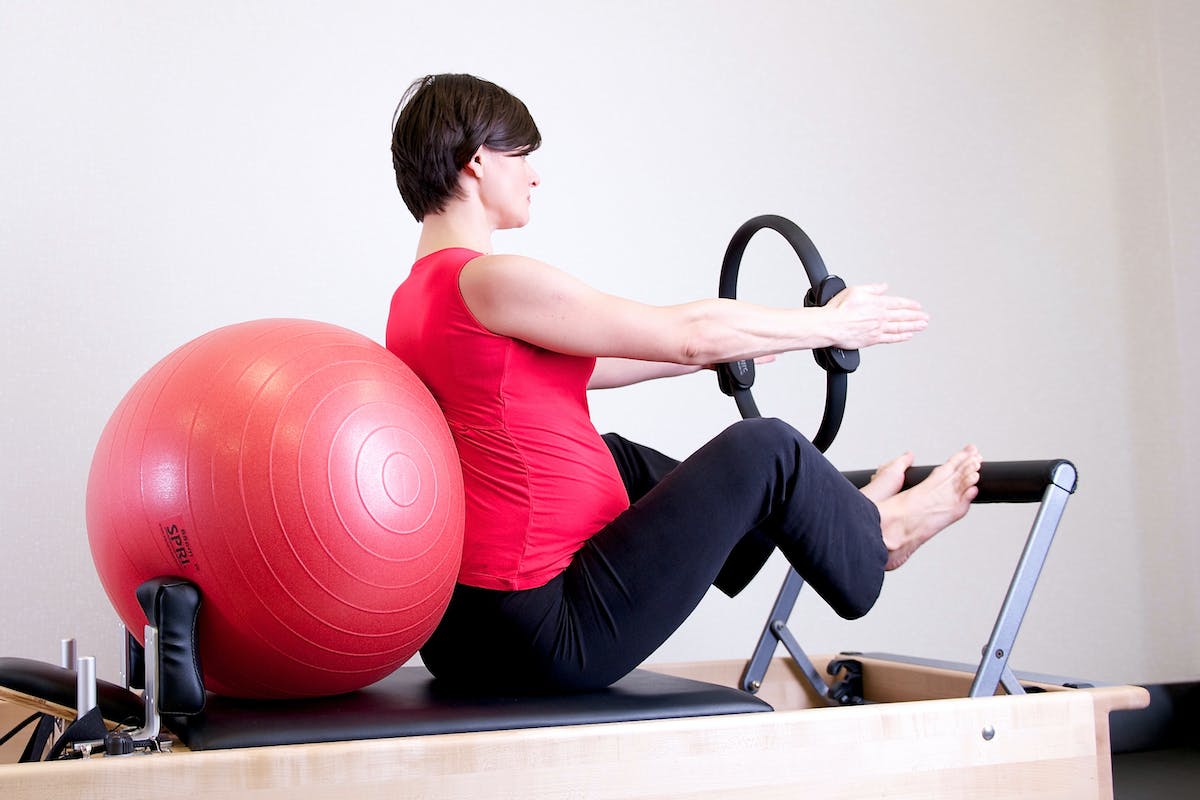Pregnancy requires lifestyle adaptations, including safe, tailored exercise routines. Health professionals need knowledge of safe exercises for expecting mothers, focusing on their health and the unborn child. Exercise types include prenatal yoga, pilates, low-impact water aerobics, and weight training. The goal is to integrate exercise into pregnancy safely and effectively.
Understanding Pregnancy and Exercise
In understanding pregnancy and exercise, it’s key to recognize the physical changes impacting a woman’s fitness routine. Hormonal and physiological shifts, induced by pregnancy, influence physical activity capacity. Adapting workouts to these changes ensures safety and efficiency.
Nutrition, requiring heightened energy and nutrient intake during pregnancy, plays a critical role. It influences strength and endurance, affecting workout intensity and duration. Consequently, exercise plans should match nutritional intake and well-being.
Furthermore, fluctuating sleep patterns during pregnancy add to the complexity. Sleep disruptions, impacting energy levels, mood, and overall health, can affect exercise capacity. Thus, promoting quality sleep is as vital as optimal nutrition and adapted exercise.
The Benefits of Prenatal Yoga
Prenatal yoga, a gentle physical exercise, provides pregnant women with fitness and overall health benefits. This exercise focuses on safe yoga poses, ensuring the wellbeing of both mother and unborn child. These poses, performed under expert supervision, strengthen pelvic muscles, increase flexibility, and improve balance, crucial for supporting pregnancy-induced body changes.
Prenatal yoga also incorporates deep breathing exercises for relaxation and stress management, facilitating a connection between pregnant women and their transforming bodies. This mindfulness practice in yoga fosters emotional wellbeing, decreases anxiety, and mentally prepares women for labor. Every aspect of prenatal yoga is optimized for promoting fitness, mental health, and preparedness for childbirth.
Pilates: A Strength Builder
Pilates strengthens the body, particularly the core, aiding pregnant women. Controlled movements enhance body awareness, balance, and coordination. Mat Pilates, a variant, focuses on flexibility, strength, and body awareness without equipment. It targets the body’s powerhouse – abdomen, lower back, and hips. The Pilates Reformer, a piece of equipment, provides resistance, building strength safely. Pregnant women should use it under a Pilates instructor’s supervision. Pilates prepares the body for childbirth and assists in postpartum recovery.
Safe Cardio for Expecting Mothers
Cardio, when executed correctly, offers health benefits to pregnant women. Discussing low-impact cardio exercises reveals their suitability during pregnancy due to safety and effectiveness. The exploration of prenatal cardio’s positive effects and exercise intensity monitoring ensures mother-baby well-being.
Low-Impact Cardio Exercises
Low-impact cardio exercises, specifically tailored for expectant mothers, are crucial for maintaining fitness without stressing the body. Notable exercises include swimming and cycling.
Swimming offers pregnant women a full-body workout that boosts cardiovascular health and minimizes joint stress. The water’s buoyancy supports the body, lowering injury risk and ensuring exercise comfort.
Stationary biking is a safe, low-impact exercise, enhancing lower body strength and cardiovascular fitness. It allows pace and resistance control, ensuring a workout that meets individual fitness levels and pregnancy stages.
Benefits of Prenatal Cardio
Prenatal cardio exercises provide physical and health benefits for expectant mothers and unborn children. These benefits include:
- Optimized Prenatal Nutrition: Regular cardio exercises enhance appetite regulation, promoting intake and digestion of essential nutrients, thereby mitigating pregnancy-related constipation.
- Boosted Mental Wellness: The activity stimulates endorphin release, managing stress, improving sleep quality, and reducing prenatal and postpartum depression risk.
- Labor Preparedness: Cardio exercises build stamina and strength, potentially facilitating smoother childbirth.
Monitoring Exercise Intensity
Prenatal cardio exercises offer numerous benefits. Monitoring exercise intensity is critical for safety and maximum benefit. Heart rate monitoring is a reliable method, enabling moderate-intensity exercise maintenance. Another tool is the perceived exertion scale, a subjective assessment allowing women to adjust workouts to their fitness level, reducing overexertion risk.
Water Aerobics: Low Impact Exercise
Water aerobics, a low impact exercise, is highly recommended by healthcare professionals for pregnant women due to its safety and effectiveness. The water’s buoyancy minimizes joint strain, providing comfort for expectant mothers dealing with increased weight-related discomfort.
This exercise offers dual benefits: it promotes cardiovascular fitness essential for overall health and successful pregnancy, and boosts muscle strength beneficial in labor and postpartum recovery.
Hydration is crucial in water aerobics. It helps maintain body temperature, facilitates nutrient delivery to the fetus, and prevents overheating and dehydration, common pregnancy issues.
In succinct terms, remember:
- Water aerobics is a safe, low impact exercise, mitigating joint strain, and enhancing cardiovascular fitness and muscle strength.
- This exercise aids in healthier pregnancy and smoother postpartum recovery.
- Proper hydration is vital in these exercises, aiding in temperature regulation, nutrient delivery to the fetus, and preventing hydration-related issues.
Walking: The Simplest Exercise
“Walking, a simple exercise, offers significant benefits for pregnant women. This gentle, yet effective, exercise maintains physical fitness during pregnancy. Adhering to safety precautions ensures the wellbeing of mother and baby.”
Benefits of Walking
Walking is beneficial for pregnant women, enhancing both physical and mental health with the right equipment and footwear.
- Cardiovascular Fitness: Walking maintains heart and lung health and manages gestational diabetes by regulating glucose.
- Mood and Energy: Regular walks lift mood and combat fatigue due to endorphin release.
- Labor Preparation: Walking strengthens muscles and builds endurance, aiding in labor and delivery.
Safety Precautions
Hydrating before, during, and post-exercise is crucial for pregnant women to avoid dehydration, potentially causing dizziness and contractions. Wearing supportive walking shoes reduces fall or injury risks while loose, breathable attire enhances comfort and prevents overheating. Listening to the body’s signals prevents overexertion. With these precautions, walking remains a safe, beneficial exercise during pregnancy.
Stretching and Flexibility Workouts
Stretching and flexibility workouts during pregnancy enhance comfort, reduce muscle tension, and boost mobility. Together with balance training, they diminish common discomforts like back pain and leg cramps, preparing the body for labor. Deep breathing techniques used during these exercises promote calmness, reduce stress, and enhance the baby’s oxygen supply.
Three effective exercises include:
- Pregnancy Yoga: This exercise enhances flexibility, strength, balance, and relaxation through the use of deep breathing techniques.
- Pelvic Tilt Exercises: These exercises alleviate back pain, strengthen abdominal muscles, and improve stability. Options for performing include standing, sitting, or on all fours.
- Leg Stretches: Regular calf muscle stretches using a wall for support prevent pregnancy-associated leg cramps.
During workouts, avoid overstretching and stop immediately if discomfort or pain occurs. Always consult a healthcare provider for advice.
Kegel Exercises for Pregnancy
Prenatal fitness includes Kegel exercises, beneficial in pregnancy and postpartum recovery. Proper understanding and execution lead to simpler labor and quicker recovery post-childbirth. The section details Kegel exercise benefits and correct performance.
Benefits of Kegel Exercises
Indeed, Kegel exercises during pregnancy bring multiple benefits. They debunk common myths, providing a reliable option with alternatives available.
- Pelvic Muscles Strengthening: Kegels target pelvic floor muscles, enhancing strength and flexibility for easier childbirth and speedy postpartum recovery.
- Urinary Incontinence Prevention: Regular Kegels reduce urinary incontinence risk during and post-pregnancy.
- Sexual Health Enhancement: Kegel exercises contribute to improved sexual health and satisfactory intimate relations.
Performing Kegels Correctly
Kegel exercises, when performed correctly, boost pelvic health and ease pregnancy and labor. Identify the essential pelvic floor muscles, typically engaged when halting urination mid-stream. Tighten these muscles for five counts, then relax for five, repeating this ten times, thrice daily. Regular practice fortifies these muscles, preventing incontinence and reducing back pain. Kegel’s effectiveness in labor is substantial, making it a crucial exercise during pregnancy.
Tailored Weight Training
Pregnancy fitness benefits from tailored weight training, designed for strengthening the body while ensuring mother and baby’s safety. This method maintains muscle tone, enhances mood, and boosts stamina without joint strain. Safe, beneficial workouts during pregnancy include resistance band routines and pregnancy-friendly aerobics.
Weight training in pregnancy fitness may involve:
- Resistance Band Workouts: These exercises build strength and flexibility without heavy weights. The resistance adjusts to comfort and strength levels, making it a versatile pregnancy tool.
- Pregnancy-Friendly Aerobics: This exercise boosts cardiovascular health and endurance. It keeps fit while considering the evolving body.
- Light Weightlifting: Light weights maintain muscle tone and strength during pregnancy. Using proper form and avoiding overexertion prevents injury.
The Magic of Dancing
Dancing offers physical and emotional advantages for expectant mothers. It enhances body awareness, balance, and cardiovascular health and is adaptable to individual fitness levels and pregnancy stages, ensuring safety.
Different dance styles offer unique benefits. Belly dancing, an ancient movement form, strengthens pelvic muscles and increases body fluidity, crucial for labor and delivery. Ballroom and Latin dances boost posture and coordination. Low-intensity styles like yoga dance promote relaxation and stress relief.
Dancing’s emotional benefits include uplifting spirits, reducing anxiety, depression, and enhancing self-esteem. It fosters community in group settings and allows self-expression and creativity. Therefore, dancing is a valuable, adaptable exercise for pregnant women.
Meditation and Relaxation Techniques
Meditation and relaxation techniques, such as breathing exercises, mindful visualization, and yoga, enhance emotional well-being and stress management in expectant mothers.
- Breathing Techniques: Deep, mindful breathing, like diaphragmatic or ‘belly breathing’, reduces anxiety and aids labor pain management.
- Mindful Visualization: Focusing on peaceful images or ideas, such as a serene environment or the unborn baby’s health, assists in stress management and emotional health promotion.
- Yoga and Stretching: Gentle yoga poses and stretches alleviate physical discomfort and enhance flexibility. These practices integrate mindful breathing and visualization, offering a comprehensive approach for expectant mothers.
Important Exercise Safety Tips
In prenatal fitness, safety is crucial. Correctly using low-impact exercise equipment like stationary bikes or treadmills minimizes fall and joint strain risks. Ensure equipment is in good condition to prevent injury.
Nutrition balance is integral to prenatal exercise safety. A well-balanced diet provides energy for physical activities and supports fetal growth. Increase intake of protein, vitamins, and minerals, and maintain hydration during exercise.
Consult a healthcare professional before undertaking activities. Each pregnancy is unique; safety varies among individuals. Regular check-ups and communication with healthcare providers monitor exercise’s impact on pregnancy. Adjust activities as per body’s response to support a healthy pregnancy.
Frequently Asked Questions
What Are Some Safe Exercises That Can Be Done in the Third Trimester?
Prenatal yoga, enhancing flexibility and reducing stress, is beneficial during the third trimester. Swimming, when safety measures are adhered to, provides low-impact cardiovascular exercise, promoting overall health.
Are There Specific Exercises That Can Help With Labor and Delivery?
Indeed, specific exercises like prenatal yoga aid labor and delivery. Prenatal yoga strengthens the pelvic floor and breathing techniques facilitate pain management during contractions.
Can Exercise During Pregnancy Help With Postpartum Recovery?
Indeed, pregnancy exercise assists significantly in postpartum recovery. It lowers postpartum depression risk, enhances mood, promotes heart health, and boosts muscular strength.
How Should Nutritional Needs Change With Exercise During Pregnancy?
Exercise during pregnancy escalates nutritional demand. Hydration maintenance, under healthcare professional guidance, is crucial, along with the consideration of supplements for key nutrients such as iron, folic acid, and calcium.
Can Exercising During Pregnancy Positively Influence the Baby’s Health and Development?
Indeed, prenatal yoga, a form of pregnancy exercise, positively impacts baby’s health and development. It reduces maternal stress and enhances mental well-being, indirectly benefitting the baby.



